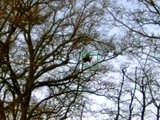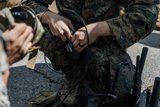EID to unveil new vehicle communication system at DSEI
The Portuguese company’s naval communications system is in service across more than a dozen countries. It has turned to its home nation for support in developing a new vehicle based C2 system.
Raytheon Company's active electronically scanned array radar technology recently achieved more than 250,000 operational flight hours. Used by customers around the world on multiple platforms, more than 300 radar systems have been delivered to domestic and international customers to help ensure their mission success.
"We believe Raytheon's AESA technology is the cornerstone of future fighter aircraft," said Mark Kula, vice president, Tactical Airborne Systems, for Raytheon Space and Airborne Systems. "No one offers Raytheon's level of operational AESA capability and mission support. Our leading-edge AESA technology is combat-proven, in production, and available today."
Today's changing threat environment drives warfighters' need for technologically advanced sensors that will keep existing platforms relevant and operational at a moment's notice. Raytheon's AESA radars provide a significant advantage in the demanding fighter aircraft environment, ensuring customers remain at the forefront of tactical capabilities to complete their mission.
"Raytheon built the first operational AESA fighter radar more than 10 years ago with the APG-63(V)2 on the F-15C," said Kula. "Since then, we have continually evolved our AESA technology to ensure we can provide incomparable detection, targeting, tracking and self-protection in the competitive and complex mission landscape."
Raytheon's versatile family of AESA radars delivers multirole, multimission support with superior fighter flexibility, improved situational awareness, and optimal performance in all environments. All Raytheon AESA radar models are scalable to be easily tailored to any tactical fighter platform. In addition to enhanced capabilities, this leading-edge AESA technology provides greater reliability and maintainability, which results in lower life-cycle costs.
Source: Raytheon

The Portuguese company’s naval communications system is in service across more than a dozen countries. It has turned to its home nation for support in developing a new vehicle based C2 system.

The Vision4ce Deep Embedded Feature Tracking (DEFT) technology software is designed to process video and images by blending traditional computer vision with artificial intelligence (AI) algorithms to present actionable information from complex environments.

Persistent Systems has been cleared by National Security Agency (NSA) to transmit sensitive data on commercial networks. The devices are added to the NSA’s Commercial Solutions for Classified (CSfC) component list which also includes other companies’ products providing the same security.

The release of the UK’s Strategic Defence Review (SDR) has been long promised as mid-year. It is possible it could be as early as 2 June although the UK Ministry of Defence (MoD) continues to play its cards close to its chest.

Intelsat outlines how its multi-orbit SATCOM architecture is enhancing connectivity and resilience for special operations forces operating in degraded and contested environments.

Next-Generation Overhead Persistent Infrared (Next-Gen OPIR) satellites are intended to provide early warning of missile launches from any location worldwide and new ground stations will result in expanded coverage of critical missile warning.